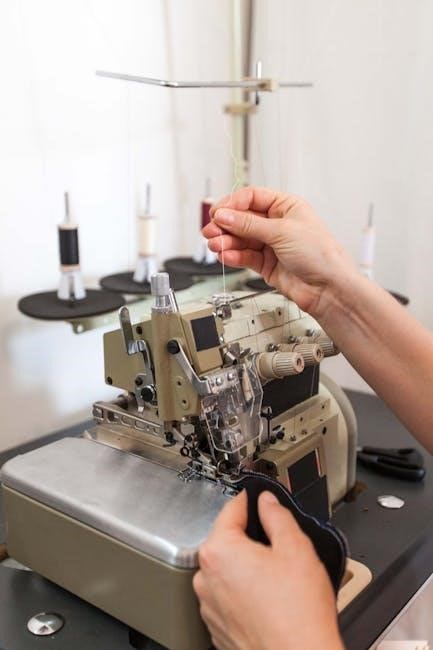Manual Control Remoto Aire Acondicionado: Guía Completa
This comprehensive guide helps you master your AC remote‚ turning it into a universal controller for devices like TVs. Proper setup requires understanding the “mode” button‚ a key universal function. A user-friendly LCD screen simplifies operation and ensures effective temperature and function adjustments.
Introducción al Control Remoto de Aire Acondicionado
The air conditioning remote control serves as the primary interface for managing your cooling and heating system. Understanding its functionalities is crucial for optimal comfort and energy efficiency. This guide introduces the fundamental aspects of AC remote controls‚ exploring their purpose‚ components‚ and operational principles. Modern remotes offer a wide array of features‚ enabling precise temperature adjustments‚ mode selections‚ timer settings‚ and fan speed control. This eliminates manual adjustments directly on the AC unit. The remote control uses infrared signals to communicate commands to the air conditioner. Ensuring a clear line of sight is essential for reliable operation. Furthermore‚ understanding the remote control enhances your ability to troubleshoot common issues‚ such as unresponsive buttons or display problems. Whether you have a standard or universal remote‚ familiarizing yourself with its layout and functions will significantly improve your experience with your air conditioning system. Many universal remotes can also be programmed to control other devices. This consolidates multiple remotes into one convenient device‚ reducing clutter and simplifying home entertainment management. Mastering the AC remote control unlocks the full potential of your air conditioner‚ providing customized comfort and energy savings.

Tipos de Controles Remotos: Estándar vs. Universal
Air conditioning systems typically come with either a standard or a universal remote control. Standard remotes are designed specifically for a particular brand and model of AC unit. These remotes offer seamless compatibility and direct access to all the features of the designated air conditioner. However‚ they cannot control other devices. Universal remotes‚ on the other hand‚ are designed to operate with a wide range of air conditioner brands and models. They require programming to match the specific AC unit‚ often involving entering a code or using an auto-search function. While universal remotes offer the convenience of controlling multiple devices‚ their compatibility may not be as comprehensive as standard remotes. Some features might not be fully supported‚ or the programming process can be complex. Selecting between a standard and universal remote depends on your needs. If you only need to control your AC unit and prefer guaranteed compatibility‚ a standard remote is ideal. If you want to consolidate multiple remotes into one device and are willing to invest time in programming‚ a universal remote may be more suitable.

Funciones Básicas de un Control Remoto de A/C
Air conditioner remote controls offer a range of essential functions to manage your cooling experience. The primary function is power control‚ allowing you to turn the AC unit on and off with a simple button press. Temperature adjustment is another core feature‚ enabling you to increase or decrease the desired room temperature. Mode selection is crucial‚ offering options like “Cool” for cooling‚ “Heat” for warming‚ “Auto” for automatic temperature regulation‚ and “Fan” for air circulation without cooling or heating. Fan speed control lets you adjust the intensity of the airflow‚ typically with options like low‚ medium‚ and high. The timer function allows you to set specific times for the AC unit to turn on or off automatically‚ optimizing energy consumption. Some remotes include a “Swing” function‚ which controls the direction of the air vents‚ ensuring even distribution of cool or warm air throughout the room. A display screen shows current settings‚ temperature‚ and timer information. These basic functions ensure convenient and efficient operation of your air conditioner.
Encendido y Apagado del Aire Acondicionado
The most fundamental function of any air conditioner remote control is the ability to turn the unit on and off. This process is typically straightforward‚ involving a dedicated “Power” button‚ often marked with a universal power symbol. To turn the air conditioner on‚ simply point the remote at the unit and press the Power button. The AC unit should respond with a beep or a light indicator‚ signaling that it has been activated. Similarly‚ to turn the air conditioner off‚ point the remote at the unit and press the Power button again. The AC unit should then cease operation‚ and any indicator lights will typically turn off. Ensure that the remote has a clear line of sight to the AC unit’s receiver for reliable operation. If the unit doesn’t respond‚ check the batteries in the remote and make sure they are properly installed. Obstructions between the remote and the AC unit can also interfere with the signal. Some units have a slight delay before responding‚ so wait a few seconds after pressing the button.
Ajuste de la Temperatura
Adjusting the temperature is a core function of your air conditioner remote. Typically‚ you’ll find dedicated buttons marked with up and down arrows‚ or “+” and “-” symbols‚ specifically for increasing or decreasing the desired room temperature. To lower the temperature‚ point the remote at the AC unit and press the down arrow or “-” button. Each press usually adjusts the temperature by one degree Celsius or Fahrenheit‚ depending on your unit’s settings. Conversely‚ to increase the temperature‚ aim the remote at the AC unit and press the up arrow or “+” button. Again‚ each press will incrementally raise the temperature. The current set temperature is generally displayed on the remote’s LCD screen‚ allowing you to monitor and fine-tune it precisely. Keep in mind that the achievable temperature range depends on your AC unit’s capabilities. Some models may have a limited range or specific increments. Ensure there’s a clear path between the remote and the AC unit for proper signal transmission. If adjustments aren’t registering‚ verify battery levels and try again.

Selección del Modo de Funcionamiento (Frío‚ Calor‚ Automático‚ Ventilador)
Selecting the appropriate operating mode is crucial for optimal air conditioner performance. Your remote control likely features a “Mode” button‚ allowing you to cycle through various options. The “Frío” (Cool) mode activates the cooling function‚ lowering the room temperature. “Calor” (Heat) mode‚ if available‚ provides heating during colder months. “Automático” (Automatic) mode intelligently adjusts cooling or heating based on the current room temperature‚ maintaining a comfortable environment without constant manual adjustments. “Ventilador” (Fan) mode simply circulates air without cooling or heating‚ providing a gentle breeze. To select a mode‚ point the remote at the AC unit and press the “Mode” button repeatedly until the desired mode is displayed on the remote’s LCD screen. The corresponding indicator light on the AC unit itself should also illuminate‚ confirming your selection. Ensure a clear line of sight between the remote and the AC unit for proper signal transmission. If the mode doesn’t change‚ check the batteries or consult your AC unit’s manual.
Ajuste de la Velocidad del Ventilador
Adjusting the fan speed on your air conditioner allows you to customize airflow and cooling intensity. The remote control typically features a “Fan” button‚ often represented by a fan icon. Pressing this button cycles through different fan speed options‚ usually including “Auto‚” “Low‚” “Medium‚” and “High.” “Auto” mode intelligently adjusts the fan speed based on the cooling demand‚ providing quieter operation when less cooling is needed. “Low” provides a gentle‚ quiet airflow‚ suitable for sleeping or when minimal cooling is required. “Medium” offers a balanced airflow and cooling performance. “High” delivers maximum airflow for rapid cooling in hot conditions. To adjust the fan speed‚ point the remote at the AC unit and press the “Fan” button until the desired speed is displayed on the remote’s LCD screen. The AC unit may also have indicator lights to show the selected fan speed. Ensure a clear line of sight for effective signal transmission. Some remotes might have a “Turbo” or “Powerful” mode‚ which temporarily sets the fan to its highest speed for quick cooling.
Uso del Temporizador (Timer)

The timer function on your AC remote allows you to schedule the air conditioner to turn on or off automatically at a specific time. This feature is useful for energy conservation and pre-cooling a room before you arrive. To set the timer‚ locate the “Timer” button on the remote. Pressing this button usually activates the timer setting mode. Use the “+” and “-” buttons to adjust the desired time for the AC to turn on or off. Some remotes have separate buttons for setting the “On” and “Off” times. The LCD screen will display the set time. Confirm the timer setting by pressing the “Timer” button again or a designated “Confirm” button. A timer icon will usually appear on the screen to indicate that the timer is active. To cancel the timer‚ press the “Timer” button until the timer icon disappears from the screen. Ensure the remote has a clear line of sight to the AC unit for the timer setting to be properly received. The timer function can be used in conjunction with other settings‚ such as temperature and fan speed‚ to customize your comfort. Regularly check the timer settings to ensure they are accurate.
Configuración de un Control Remoto Universal

Configuring a universal remote for your air conditioner involves a few key steps to ensure compatibility. First‚ identify the brand and model of your AC unit. Universal remotes often come with a code list that corresponds to various AC brands. Locate the code list and find the code that matches your AC brand. Turn on your air conditioner manually. Point the universal remote at the AC unit and press the “Set” or “Code Search” button. Enter the code you found in the code list using the number buttons on the remote. After entering the code‚ press the “Power” button on the remote. If the AC unit turns off‚ the code is correct. If it doesn’t‚ try another code from the list for your AC brand. Some remotes have an auto-search function‚ which automatically cycles through codes until it finds one that works. If the auto-search function is available‚ follow the instructions in the remote’s manual to activate it. Once the remote is configured‚ test all the buttons to ensure they are functioning correctly. If some buttons don’t work‚ try a different code. Keep the code list in a safe place for future reference. Using new‚ quality batteries is crucial for proper function during setup.
Búsqueda de Códigos Compatibles
Finding the correct codes for your air conditioner is a critical step in setting up a universal remote. Start by consulting the code list included with your universal remote. This list typically contains codes for various air conditioner brands and models. Locate your air conditioner’s brand in the list and note all the associated codes. If you can’t find your specific model‚ don’t worry; try the codes listed for the brand in general. If you’ve misplaced the physical code list‚ check the manufacturer’s website for a digital version. Many universal remote manufacturers offer online code databases that you can search. Another option is to use online search engines. Type in the brand and model of your air conditioner along with “universal remote code” to find potential codes. If none of these methods work‚ some universal remotes have an auto-search function. This function automatically scans through all the available codes until it finds one that works with your AC unit. Refer to your remote’s manual for instructions on how to use the auto-search function. Remember to test each code thoroughly to ensure all functions‚ like power‚ temperature‚ and fan speed‚ are working correctly. Keep a record of the working code for future reference.

Métodos de Configuración (Manual‚ Automática)
Configuring a universal remote for your air conditioner typically involves two primary methods: manual and automatic. The manual method requires you to enter a specific code corresponding to your air conditioner’s brand. This method involves locating the appropriate code from the code list provided with the remote. Once you’ve found the code‚ you’ll usually press a “setup” or “code” button on the remote‚ enter the code using the number pad‚ and then test the remote’s functionality. If the AC unit responds‚ you’ve successfully configured the remote. The automatic method‚ also known as auto-search‚ is a more convenient option if you don’t have the code list or can’t find the correct code. In this mode‚ the remote cycles through a range of codes‚ sending signals to your air conditioner until it detects a response. When your AC unit turns on or reacts to a signal‚ you’ll typically press a button to lock in the code. This method can take some time as the remote tests numerous codes‚ but it eliminates the need for manual code entry. Always refer to your universal remote’s manual for detailed instructions specific to your model‚ as the exact steps for each method can vary. Ensure that your remote has fresh batteries before attempting either configuration method.

Solución de Problemas Comunes
Several common issues can arise when using an air conditioner remote. If the remote isn’t responding‚ start by replacing the batteries with fresh ones. Ensure they are inserted correctly‚ matching the polarity markings. If that doesn’t work‚ check for obstructions between the remote and the AC unit’s receiver. Clean the remote’s infrared (IR) emitter with a soft‚ dry cloth. Sometimes‚ direct sunlight or fluorescent lights can interfere with the IR signal‚ so try moving to a different location. If you have a universal remote‚ verify that it’s still programmed correctly for your AC unit. You might need to reconfigure it using the appropriate code or auto-search function. If the display is dim or unreadable‚ it could also indicate low battery power. For remotes with LCD screens‚ extreme temperatures or humidity can sometimes cause malfunctions. If the buttons are sticky or unresponsive‚ gently clean the remote’s surface with a slightly damp cloth‚ avoiding excessive moisture. If problems persist‚ consult your remote’s manual or contact the manufacturer for further assistance. Remember to always point the remote directly at the AC unit’s receiver when sending commands.
El Control Remoto No Responde
When your air conditioner remote fails to respond‚ troubleshooting is necessary. First‚ ensure the batteries are fresh and correctly installed‚ matching the polarity. If replacing the batteries doesn’t solve the issue‚ check for obstructions between the remote and the air conditioner’s receiver. Obstructions like furniture or other objects can block the infrared signal. Clean the remote’s infrared (IR) emitter with a soft‚ dry cloth to remove any dust or grime that might be interfering with the signal. Strong sunlight or certain types of lighting can also disrupt the IR signal‚ so try adjusting the lighting or moving to a different location. If you’re using a universal remote‚ verify that it’s properly programmed for your specific AC unit. The remote might need to be reprogrammed using the correct code or auto-search function. Sometimes‚ the remote’s internal components can become damaged. If none of these steps work‚ consider testing the remote with a camera or smartphone. Point the remote at the camera and press a button. If you see a light emitting from the remote on the camera screen‚ the remote is likely functioning‚ and the problem may lie with the air conditioner’s receiver. Contact a qualified technician for further assistance.
Problemas con la Pantalla LCD
Experiencing issues with your air conditioner remote’s LCD screen can be frustrating‚ but several troubleshooting steps can help resolve the problem. If the screen is completely blank‚ the first thing to check is the batteries. Low battery power is a common cause of a non-functional LCD screen. Replace the batteries with new ones‚ ensuring they are correctly inserted with the proper polarity; If the screen is dim or flickering‚ the batteries might still be the culprit‚ even if they aren’t completely dead. Try replacing them to see if the display brightens. Sometimes‚ the LCD screen can malfunction due to a temporary glitch. Removing the batteries for a few minutes and then reinserting them can reset the remote and restore the display. Ensure the battery contacts are clean and free from corrosion. Use a cotton swab dipped in isopropyl alcohol to gently clean the contacts. If the screen displays garbled or incomplete information‚ it could indicate internal damage to the remote. In such cases‚ consider purchasing a replacement remote. If the remote is relatively new‚ check if it’s still under warranty‚ as the manufacturer may offer a repair or replacement. Avoid exposing the remote to extreme temperatures or humidity‚ as these conditions can damage the LCD screen; Store the remote in a cool‚ dry place when not in use.
Mantenimiento del Control Remoto
Proper maintenance of your air conditioner remote control ensures its longevity and reliable performance. One of the most crucial aspects of maintenance is regular battery replacement. When the remote’s responsiveness diminishes or the LCD screen dims‚ replace the batteries immediately with fresh ones of the correct type. Always remove the batteries if you plan to store the remote for an extended period‚ as leaking batteries can cause significant damage to the internal components. Cleaning the remote regularly is also essential. Dust and grime can accumulate on the surface and around the buttons‚ affecting their functionality. Use a soft‚ slightly damp cloth to wipe down the remote‚ being careful not to get any moisture inside. For stubborn dirt‚ a cotton swab dipped in isopropyl alcohol can be used to gently clean around the buttons and in crevices. Avoid using harsh chemicals or abrasive cleaners‚ as they can damage the plastic and the printed labels. Store the remote in a safe place away from direct sunlight‚ extreme temperatures‚ and humidity. These conditions can degrade the plastic and shorten the lifespan of the electronic components. Consider using a remote control holder or storing it in a drawer when not in use. Handle the remote with care to prevent accidental drops or impacts‚ which can cause internal damage and malfunctions. By following these simple maintenance tips‚ you can keep your air conditioner remote control in good working order for years to come.
Reemplazo de Baterías

Replacing the batteries in your air conditioner remote is a straightforward process that ensures continued functionality. When your remote’s display dims or becomes unresponsive‚ it’s a clear sign that the batteries need replacing. First‚ locate the battery compartment‚ typically on the back of the remote. You might need a small screwdriver to open the compartment‚ depending on the design. Once open‚ remove the old batteries‚ noting their orientation (+ and -). It is crucial to use the correct type of replacement batteries‚ usually AAA or AA‚ as specified in the remote’s manual or inside the battery compartment. Insert the new batteries‚ ensuring they are aligned correctly according to the polarity markings. Mismatched polarity can prevent the remote from working or even damage it. After inserting the new batteries‚ securely close the battery compartment. Test the remote by pointing it at your air conditioner and pressing a button. If the air conditioner responds‚ the battery replacement was successful. If not‚ double-check the battery polarity and ensure the batteries are fresh. Avoid mixing old and new batteries‚ as this can reduce performance and potentially cause leakage. When disposing of old batteries‚ do so responsibly by recycling them at designated collection points. Proper battery replacement is essential for maintaining consistent and reliable operation of your air conditioner remote control.

Limpieza del Control Remoto
Regular cleaning of your air conditioner remote control is essential to maintain hygiene and ensure proper functionality. Over time‚ dust‚ dirt‚ and oils from your hands can accumulate on the remote’s surface and buttons‚ potentially affecting its performance. Before cleaning‚ remove the batteries to prevent accidental activation or electrical damage. Use a soft‚ dry cloth to wipe down the entire remote‚ paying close attention to the buttons and crevices. For stubborn dirt or grime‚ slightly dampen the cloth with water or a mild cleaning solution‚ ensuring it is not too wet. Avoid using harsh chemicals or abrasive cleaners‚ as these can damage the remote’s plastic surface and printed labels. Gently wipe the affected areas‚ and then dry them thoroughly with a clean‚ dry cloth. For hard-to-reach areas around the buttons‚ use a cotton swab or a soft brush to remove any accumulated debris. Be careful not to apply too much pressure‚ as this could damage the buttons or internal components. After cleaning‚ allow the remote to air dry completely before reinserting the batteries. Regular cleaning not only keeps your remote looking its best but also ensures that the buttons remain responsive and the remote functions correctly. A clean remote is a happy remote‚ contributing to a more pleasant and efficient air conditioning experience. Remember to handle with care!